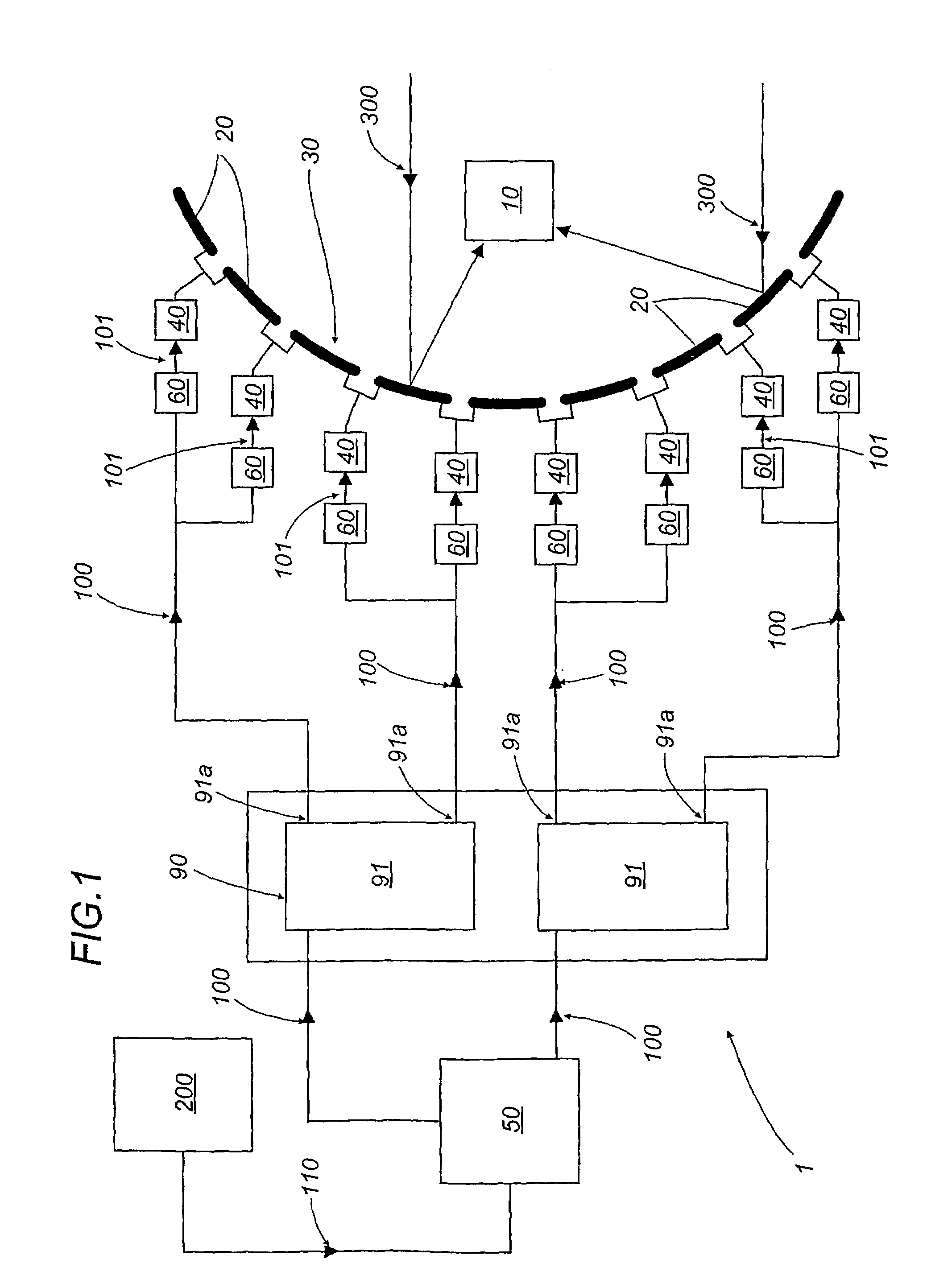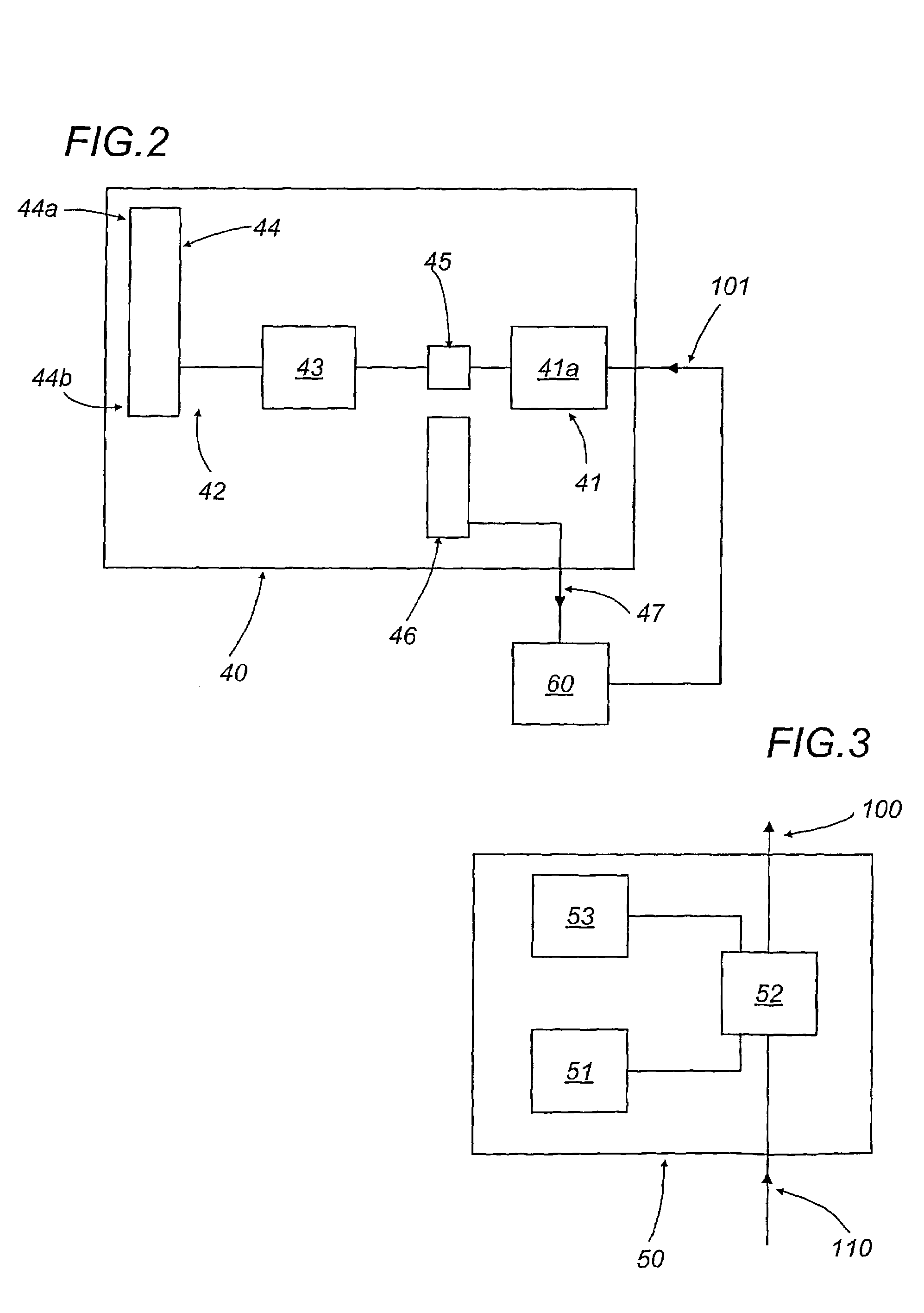Apparatus for detecting electromagnetic radiation, in particular for radio astronomic applications
a technology for electromagnetic radiation and antennas, applied in antennas, polarisation/directional diversity, transmission, etc., can solve the problems of rf interference between, the greater the negative effect of deformation on the strength of the received signal, and the negative effect of deformation on the receiving performance of the aerial, so as to reduce the total length of the cables used, minimise interference, and simple structure
- Summary
- Abstract
- Description
- Claims
- Application Information
AI Technical Summary
Benefits of technology
Problems solved by technology
Method used
Image
Examples
Embodiment Construction
[0037]In the accompanying drawings, the apparatus for detecting electromagnetic radiation according to the present invention is denoted in its entirety by the numeral 1.
[0038]With reference in particular to FIG. 1, the apparatus 1 basically comprises a receiving element 10 designed to detect electromagnetic radiation 300, for example from celestial objects.
[0039]The radiation 300 normally ranges in frequency from a few Ghz to several hundred Ghz.
[0040]The receiving element 10 generates output signals according to the radiation 300 received and addresses these signals to a reception and processing centre where they are analysed in order to obtain desired information.
[0041]In order to direct the electromagnetic radiation 300 at the receiving element 10, the apparatus 1 further comprises a surface 30, whose shape is preferably like that of a paraboloid of revolution and whose curvature can be suitably adjusted to optimise the performance of the aerial.
[0042]Thanks to its reflective pro...
PUM
 Login to View More
Login to View More Abstract
Description
Claims
Application Information
 Login to View More
Login to View More - R&D
- Intellectual Property
- Life Sciences
- Materials
- Tech Scout
- Unparalleled Data Quality
- Higher Quality Content
- 60% Fewer Hallucinations
Browse by: Latest US Patents, China's latest patents, Technical Efficacy Thesaurus, Application Domain, Technology Topic, Popular Technical Reports.
© 2025 PatSnap. All rights reserved.Legal|Privacy policy|Modern Slavery Act Transparency Statement|Sitemap|About US| Contact US: help@patsnap.com



